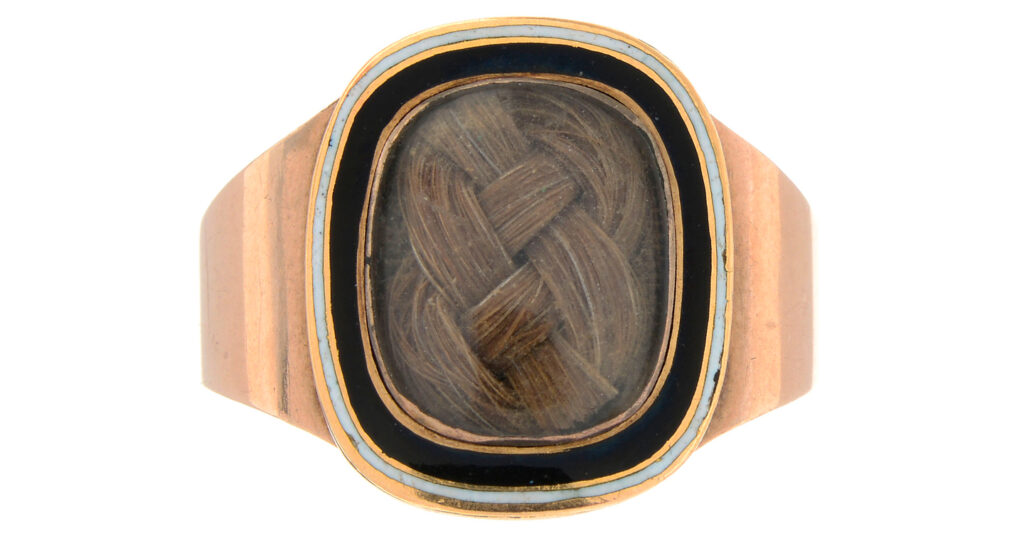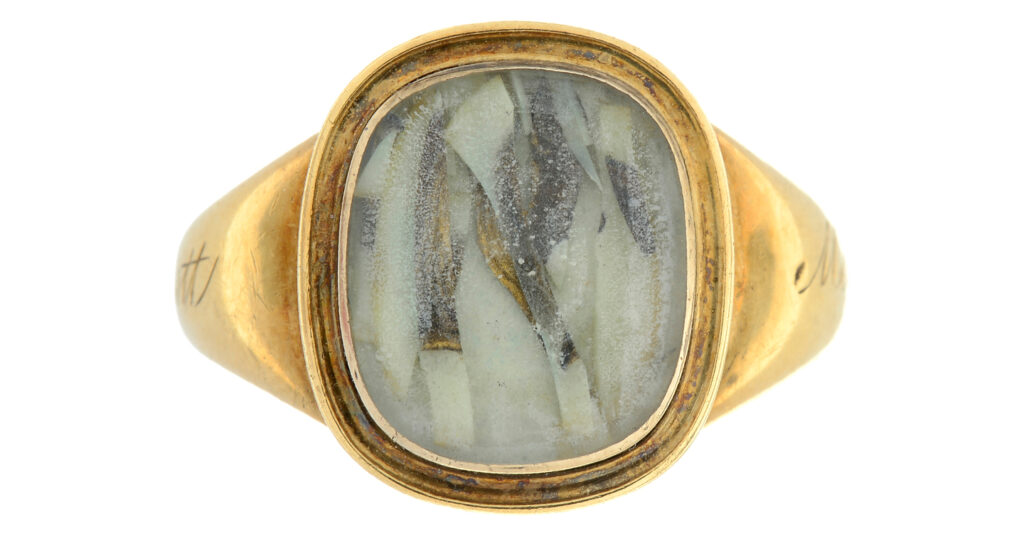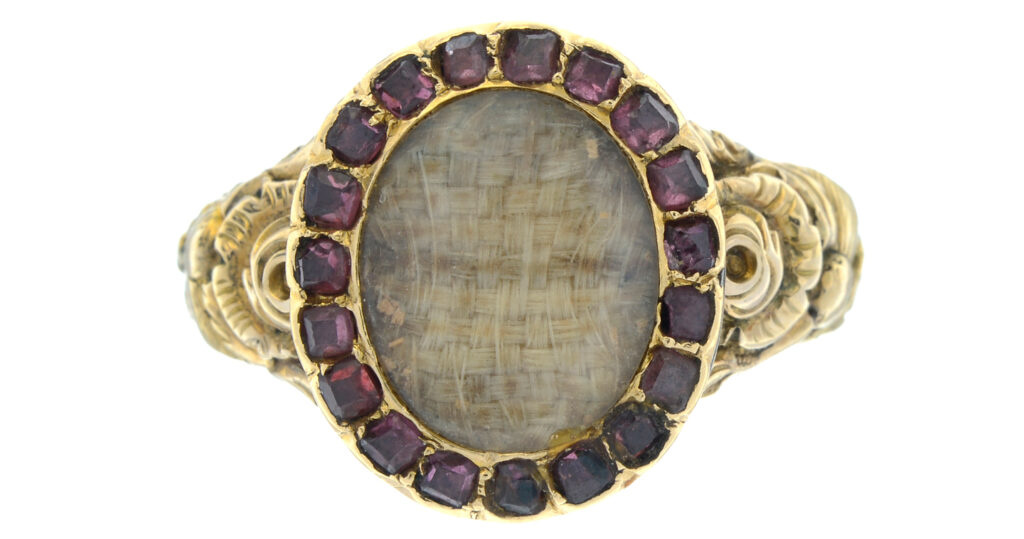Skeletal Memento Mori Ring
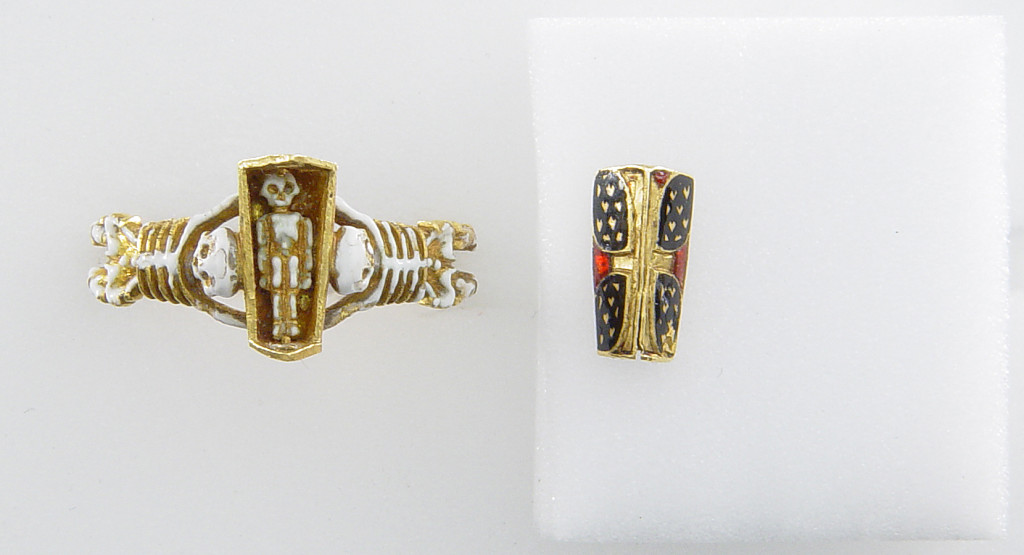
Mourning jewellery and devotional jewellery represent the same ideals. Piety and love come from an undying fidelity that allows a person who want to show off their devotion. Based on personal belief, the message of love as an actual value can equate to the expense, opulence and design of a jewel. While love is not a fungible resource, the effort a person would go to in order to display their love is the currency of their own personal value.
Memento mori was as much a personal statement as it was a reflection on actual death. It is very easy to only think of memento mori as a concept that referred only to the passing of a person, as its symbols are all centred around the desecration of the body and the passing of time.
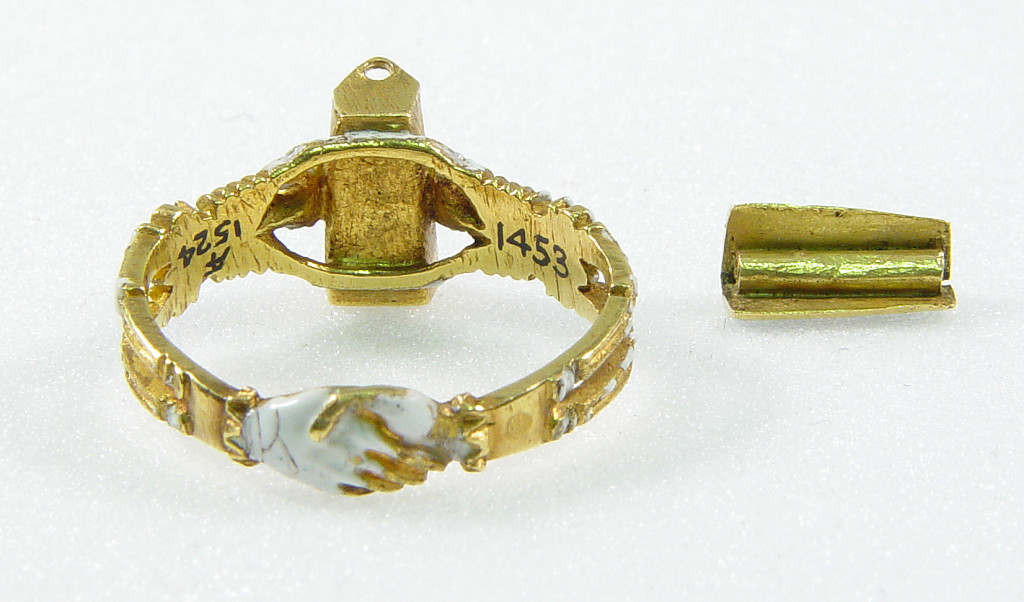
Using the symbols of death in society is a superb way to control. When the very fashion of identity is made from the images of death, the fear that it instils rightly makes people consider their own lives and how the linear trajectory of living is not to be questioned. Governing bodies remain unchallenged, as do religious thoughts.
As people began to question faith from the 16th century and a new merchant class began to grow, fashionable wear was becoming more about social identity; fashion reflected your cultural and social values. In the case of this ring, all these values enter into its existence. The ring has clasped hands at the reverse of the hoop suggest a devotional aspect to the meaning of the ring, as Dalton (Catalogue of Finger Rings, 1912) states:
‘…the clasped hands, usually a feature of love-rings (see nos. 1002ff.), should be noticed. It is not easy to say whether this ring should be regarded as a mourning-ring in the usual sense of the word, or whether it had a devotional purpose’.
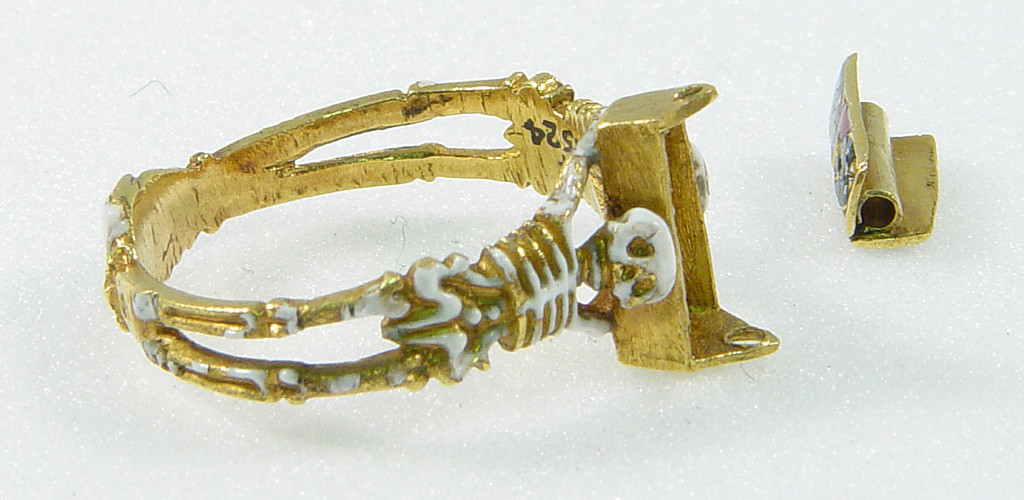
Yet the reverse is a coffin-shaped bezel with a retractable lid (pin now broken), being lifted by two skeletons. Inside the coffin is a white enamelled skeleton, amplifying its statement of death. Further designs that are featured in this ring are ‘a Maltese cross once enamelled red, on a black ground with hearts reserved in the metal’ and ‘an enamelled cinquefoil at one end.’
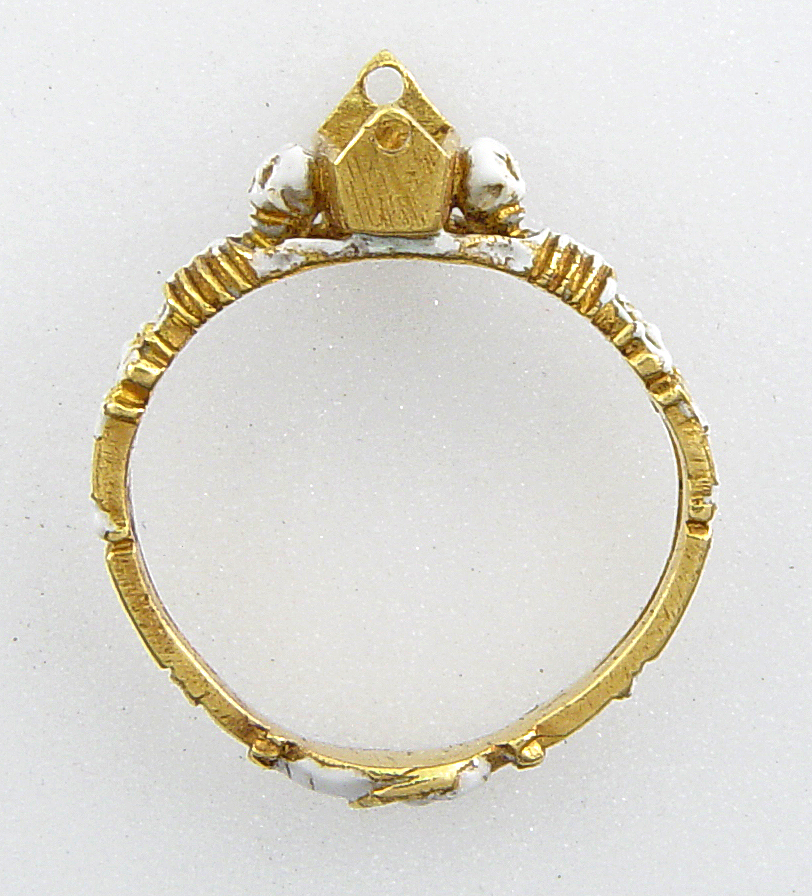
Subtlety is something that memento mori never quite indulged in. The more symbols, the more important the message of mortality and this ring shows the subject of death carrying death itself. Here is a perfect reflection of its time, values of a life that will end in judgement after death, so be sure that the moments one has while living are well spent. Human mortality was immediate, until the 1760s and the Enlightenment bought about new ways to consider life and death. It was only from this time that society could move on and adapt a respect for the classical world that had been lost.




